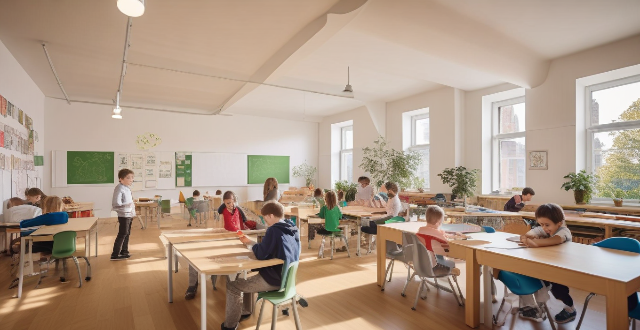The flipped classroom model is an innovative teaching strategy that reverses the traditional learning environment by delivering instructional content outside the classroom and using class time for interactive learning activities. This approach offers several benefits, including enhanced student engagement, improved student performance, optimized classroom time, increased teacher efficiency, promotion of lifelong learning skills, cultivation of a collaborative environment, support for differentiated instruction, encouragement of parental involvement, and flexibility for teacher innovation. Overall, the flipped classroom model empowers both students and teachers to make the most out of their educational experience by leveraging technology, fostering engagement, and promoting a culture of collaboration and lifelong learning.

Benefits of Using Flipped Classroom Models as an Innovative Teaching Strategy
The flipped classroom model is a pedagogical approach that reverses the traditional learning environment by delivering instructional content outside the classroom, typically through video lectures, and using class time for interactive learning activities. This innovative teaching strategy offers several benefits:
Enhanced Student Engagement
- Active Learning: Students participate more actively during class time, moving from passive listeners to active learners.
- Personalized Pace: Learners can review materials at their own pace, which accommodates different learning styles and speeds.
Improved Student Performance
- Deeper Understanding: Interactive class activities promote deeper understanding and critical thinking skills.
- Better Retention: The combination of pre-class materials and in-class discussions helps students retain information better.
Optimized Classroom Time
- Focused on Problem Solving: Class time is dedicated to problem-solving and collaborative work rather than lectures.
- Immediate Feedback: Teachers can provide immediate feedback and address misconceptions during class interactions.
Increased Teacher Efficiency
- Data-Driven Instruction: Teachers can use data from student engagement with pre-class materials to inform their teaching.
- Time Management: Teachers save time previously spent on lecturing and can focus on individual student needs.
Promotes Lifelong Learning Skills
- Self-Directed Learning: Students develop self-directed learning habits that are essential for lifelong learning.
- Digital Literacy: As students engage with digital resources, they enhance their technological skills.
Cultivates Collaborative Environment
- Group Work: Flipped classes often involve group projects and peer discussions, fostering collaboration.
- Social Interaction: The classroom becomes a social learning space where students can interact freely.
Supports Differentiated Instruction
- Tailored Approaches: Teachers can adapt their instruction to meet diverse learner needs more effectively.
- Inclusive Education: All students, including those with special needs, can benefit from personalized support.
Encourages Parental Involvement
- Homework Awareness: Parents become more aware of what their children are learning as they help with homework.
- Partnership Building: Teachers can build partnerships with parents to support student learning.
Flexibility for Teacher Innovation
- Curricular Creativity: Teachers have the freedom to be creative and innovative in their lesson planning.
- Continuous Improvement: The flipped model allows teachers to continuously improve based on student feedback.
Overall, the flipped classroom model empowers both students and teachers to make the most out of their educational experience by leveraging technology, fostering engagement, and promoting a culture of collaboration and lifelong learning.